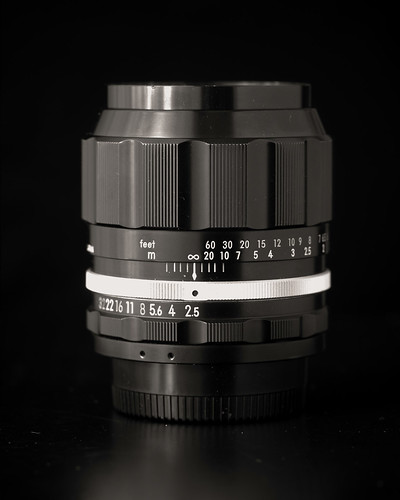Here is the second of my "show your homework" assignments.
This time I look at Rawtherapee's "Capture Sharpen" function.
I recently wrote -
"... the Lens Turbo II induced field curvature "feels" very mild in this setup. If I applied "Capture Sharpen" to the Lens Turbo II ... it would appear to be sharper than the native Sony A7 full frame image out of the camera...."
The above is a quote from my post that looked at field flatness of a Sony A6000+Lens Turbo II+Nikon Nikkor 85mm f/1.8 Ai K setup.
Relatedly, I'll repeat something:
Image processing can be as important to how "sharp" a photograph appears as just about anything else we consider. This includes "lens resolution", which is really, for most of us, system resolution where sensor size, lighting, subject all influence the result. Rarely are we able to consider a standalone optics true resolution, unless you're Roger Cicala at Lens Rentals.
Using a set of images I'd taken with a rather nicely preserved Nikon Nikkor-P 105mm f/2.5 Xenotar pre-Ai lens I hope to illustrate by sharing my homework of my reasoning behind the first quote at the beginning of this blog entry.
In addition to using Rawtherapee's Auto-Matched Tone Curve set the image levels, I applied "Capture Sharpen." I will look at the effects of Rawtherapee's "Capture Sharpen" function on apparently "sharp" images (ie: Sony A7 and lens) and apparently slightly less "sharp" images (ie: Sony A6000, Lens Turbo II, and lens).
If I understand things correctly, this is very similar to Lightroom's "Enhance Details" function. These functions try to overcome the effects of strong AA filters (see: Canon digital sensors) and slow shutter speed image blurring. I find it interesting that this function can/should(?) be applied prior to any additional sharpening (ie: UnSharp Mark, etc).
Rawtherapee's website says -
"... The Capture Sharpening tool helps recover details lost due to in-camera blurring, which can be caused by diffraction, the anti-aliasing filter, or other sources of Gaussian-type blur.
It is applied to the raw file immediately after demosaicing and modifies the data in linear gamma to limit halo generation. This means that it will only work on raw files..."
Perhaps this will turn out to be a "crazy good" function in the cases where you're looking for absolute over the top kind of image "sharpness." It could be useful when combined with another function or two. Perhaps I'll write about that?
In the meantime, take a look at the following and see what you think.
Showing my homework -


No comments:
Post a Comment